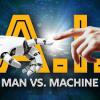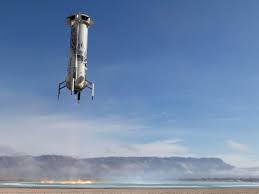
Breaking News
 The Days of Democracy Are Over
The Days of Democracy Are Over
 Elon Musk Described an AI Device to Replace Phones in 5 Years
Elon Musk Described an AI Device to Replace Phones in 5 Years
 Deposit Insurance For Billionaires?
Deposit Insurance For Billionaires?
 Rep. Troy Balderson Is Right: Coal And Gas Drive Affordable, Reliable, And Clean Energy
Rep. Troy Balderson Is Right: Coal And Gas Drive Affordable, Reliable, And Clean Energy
Top Tech News
 Graphene Dream Becomes a Reality as Miracle Material Enters Production for Better Chips, Batteries
Graphene Dream Becomes a Reality as Miracle Material Enters Production for Better Chips, Batteries
 Virtual Fencing May Allow Thousands More Cattle to Be Ranched on Land Rather Than in Barns
Virtual Fencing May Allow Thousands More Cattle to Be Ranched on Land Rather Than in Barns
 Prominent Personalities Sign Letter Seeking Ban On 'Development Of Superintelligence'
Prominent Personalities Sign Letter Seeking Ban On 'Development Of Superintelligence'
 Why 'Mirror Life' Is Causing Some Genetic Scientists To Freak Out
Why 'Mirror Life' Is Causing Some Genetic Scientists To Freak Out
 Retina e-paper promises screens 'visually indistinguishable from reality'
Retina e-paper promises screens 'visually indistinguishable from reality'
 Scientists baffled as interstellar visitor appears to reverse thrust before vanishing behind the sun
Scientists baffled as interstellar visitor appears to reverse thrust before vanishing behind the sun
 Future of Satellite of Direct to Cellphone
Future of Satellite of Direct to Cellphone
 Amazon goes nuclear with new modular reactor plant
Amazon goes nuclear with new modular reactor plant
 China Is Making 800-Mile EV Batteries. Here's Why America Can't Have Them
China Is Making 800-Mile EV Batteries. Here's Why America Can't Have Them
Bezos' Blue Origin to set record with launch testing NASA moon mission hardware

Blue Origin, the space company founded and funded by Amazon head Jeff Bezos, is planning to make its 13th trip to space on Thursday, using a New Shepard rocket that will be flying for the seventh time, which will set a record for rocket recycling.
Mission NS-13 will be carrying a dozen payload to the edge of space and back, including a lunar landing sensor demonstration that will test technologies for future moon missions as part of NASA's Artemis program.
The sensor will be the first payload to ride mounted to the exterior of New Shepard rather than inside its capsule.
SpaceX, another commercial space outfit headed by a famous billionaire in the form of Elon Musk, has so far used a single Falcon 9 booster up to six times. It's worth noting, though, that the Falcon 9 is a different class of rocket that is used for more technically complicated orbital missions.
A few of the other payloads on board this flight of New Shepard include a test of a new system to autonomously grow aquatic plants that could supplement a crew's diet and a new cooling system developed by NASA for spacecraft electronics.

 China Innovates: Transforming Sand into Paper
China Innovates: Transforming Sand into Paper

